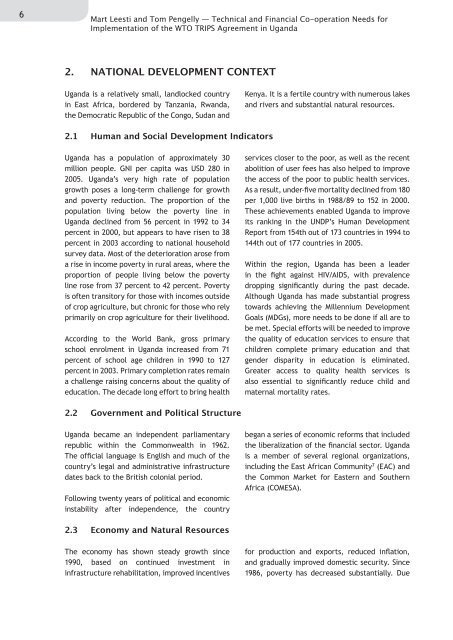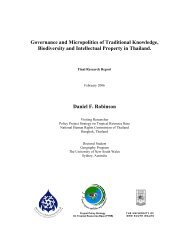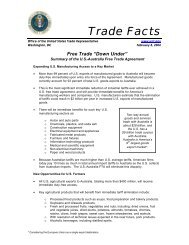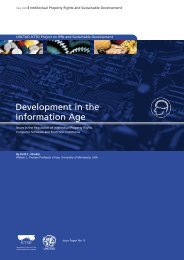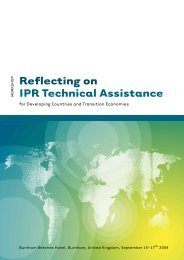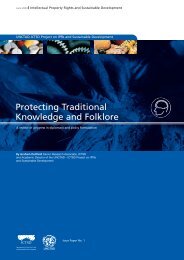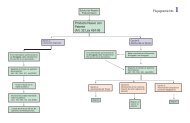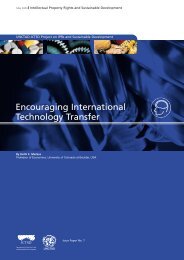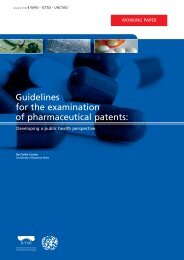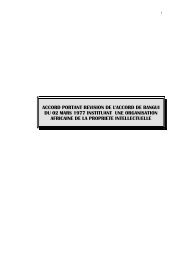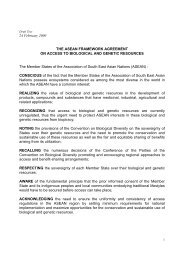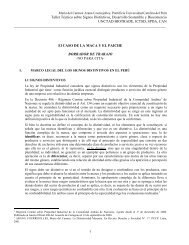Final Report of Uganda Intellectual Property ... - IPRsonline.org
Final Report of Uganda Intellectual Property ... - IPRsonline.org
Final Report of Uganda Intellectual Property ... - IPRsonline.org
You also want an ePaper? Increase the reach of your titles
YUMPU automatically turns print PDFs into web optimized ePapers that Google loves.
6<br />
Mart Leesti and Tom Pengelly ― Technical and Financial Co-operation Needs for<br />
Implementation <strong>of</strong> the WTO TRIPS Agreement in <strong>Uganda</strong><br />
2. NATIONAL DEVELOPMENT CONTEXT<br />
<strong>Uganda</strong> is a relatively small, landlocked country<br />
in East Africa, bordered by Tanzania, Rwanda,<br />
the Democratic Republic <strong>of</strong> the Congo, Sudan and<br />
Kenya. It is a fertile country with numerous lakes<br />
and rivers and substantial natural resources.<br />
2.1 Human and Social Development Indicators<br />
<strong>Uganda</strong> has a population <strong>of</strong> approximately 30<br />
million people. GNI per capita was USD 280 in<br />
2005. <strong>Uganda</strong>’s very high rate <strong>of</strong> population<br />
growth poses a long-term challenge for growth<br />
and poverty reduction. The proportion <strong>of</strong> the<br />
population living below the poverty line in<br />
<strong>Uganda</strong> declined from 56 percent in 1992 to 34<br />
percent in 2000, but appears to have risen to 38<br />
percent in 2003 according to national household<br />
survey data. Most <strong>of</strong> the deterioration arose from<br />
a rise in income poverty in rural areas, where the<br />
proportion <strong>of</strong> people living below the poverty<br />
line rose from 37 percent to 42 percent. Poverty<br />
is <strong>of</strong>ten transitory for those with incomes outside<br />
<strong>of</strong> crop agriculture, but chronic for those who rely<br />
primarily on crop agriculture for their livelihood.<br />
According to the World Bank, gross primary<br />
school enrolment in <strong>Uganda</strong> increased from 71<br />
percent <strong>of</strong> school age children in 1990 to 127<br />
percent in 2003. Primary completion rates remain<br />
a challenge raising concerns about the quality <strong>of</strong><br />
education. The decade long effort to bring health<br />
services closer to the poor, as well as the recent<br />
abolition <strong>of</strong> user fees has also helped to improve<br />
the access <strong>of</strong> the poor to public health services.<br />
As a result, under-five mortality declined from 180<br />
per 1,000 live births in 1988/89 to 152 in 2000.<br />
These achievements enabled <strong>Uganda</strong> to improve<br />
its ranking in the UNDP’s Human Development<br />
<strong>Report</strong> from 154th out <strong>of</strong> 173 countries in 1994 to<br />
144th out <strong>of</strong> 177 countries in 2005.<br />
Within the region, <strong>Uganda</strong> has been a leader<br />
in the fight against HIV/AIDS, with prevalence<br />
dropping significantly during the past decade.<br />
Although <strong>Uganda</strong> has made substantial progress<br />
towards achieving the Millennium Development<br />
Goals (MDGs), more needs to be done if all are to<br />
be met. Special efforts will be needed to improve<br />
the quality <strong>of</strong> education services to ensure that<br />
children complete primary education and that<br />
gender disparity in education is eliminated.<br />
Greater access to quality health services is<br />
also essential to significantly reduce child and<br />
maternal mortality rates.<br />
2.2 Government and Political Structure<br />
<strong>Uganda</strong> became an independent parliamentary<br />
republic within the Commonwealth in 1962.<br />
The <strong>of</strong>ficial language is English and much <strong>of</strong> the<br />
country’s legal and administrative infrastructure<br />
dates back to the British colonial period.<br />
Following twenty years <strong>of</strong> political and economic<br />
instability after independence, the country<br />
began a series <strong>of</strong> economic reforms that included<br />
the liberalization <strong>of</strong> the financial sector. <strong>Uganda</strong><br />
is a member <strong>of</strong> several regional <strong>org</strong>anizations,<br />
including the East African Community 7 (EAC) and<br />
the Common Market for Eastern and Southern<br />
Africa (COMESA).<br />
2.3 Economy and Natural Resources<br />
The economy has shown steady growth since<br />
1990, based on continued investment in<br />
infrastructure rehabilitation, improved incentives<br />
for production and exports, reduced inflation,<br />
and gradually improved domestic security. Since<br />
1986, poverty has decreased substantially. Due


